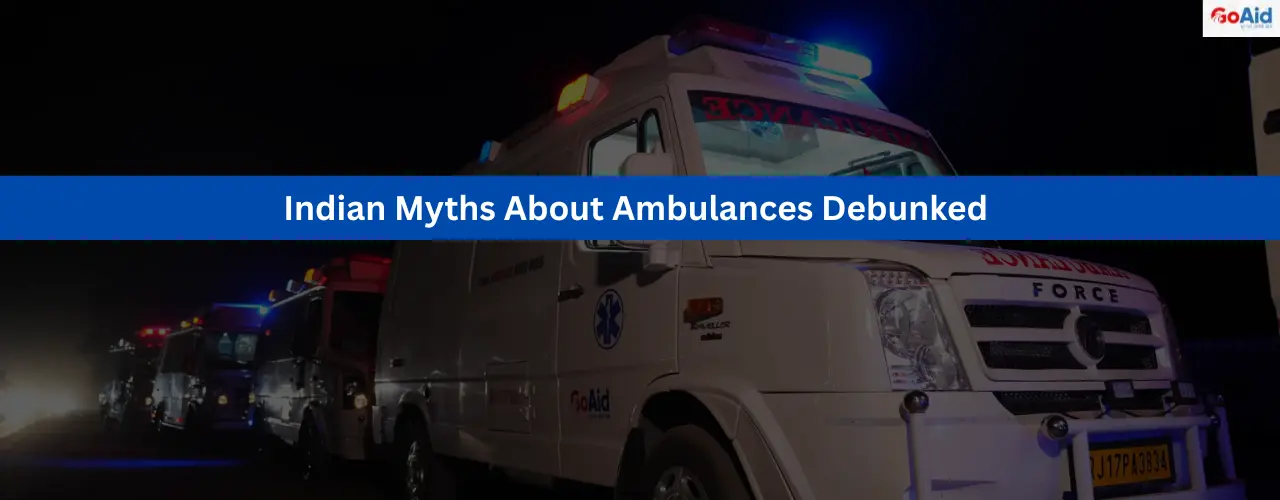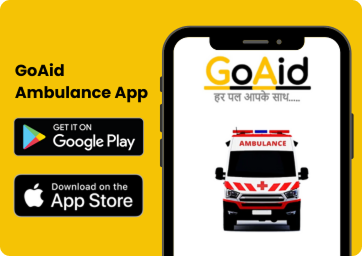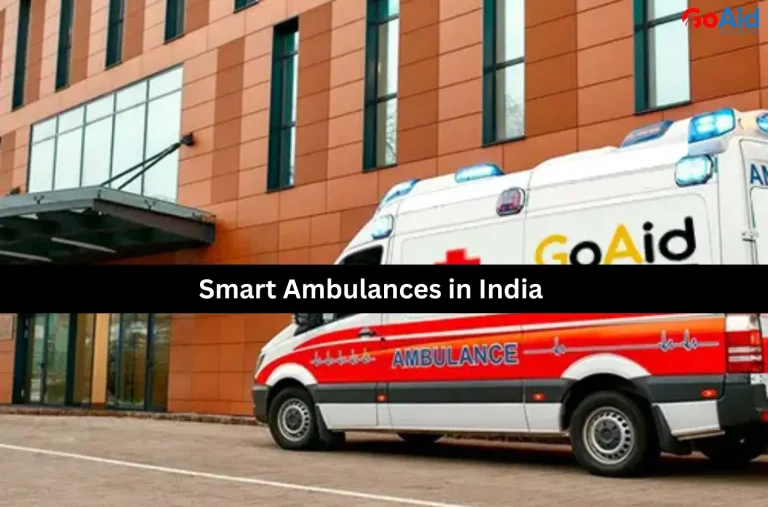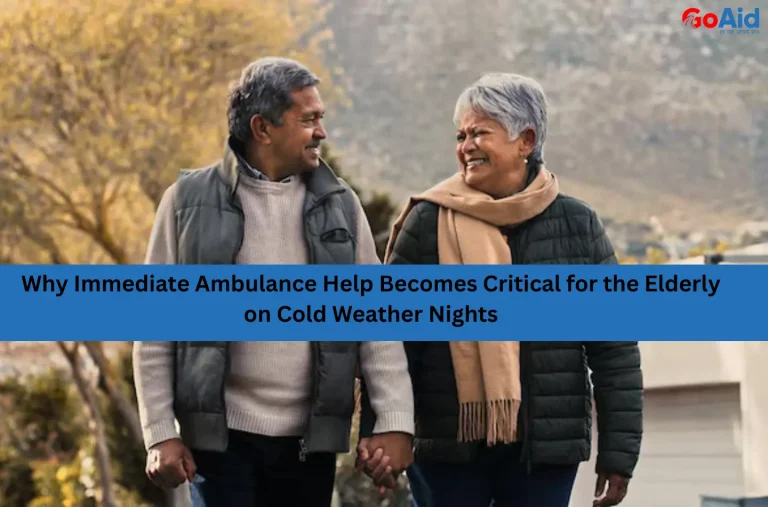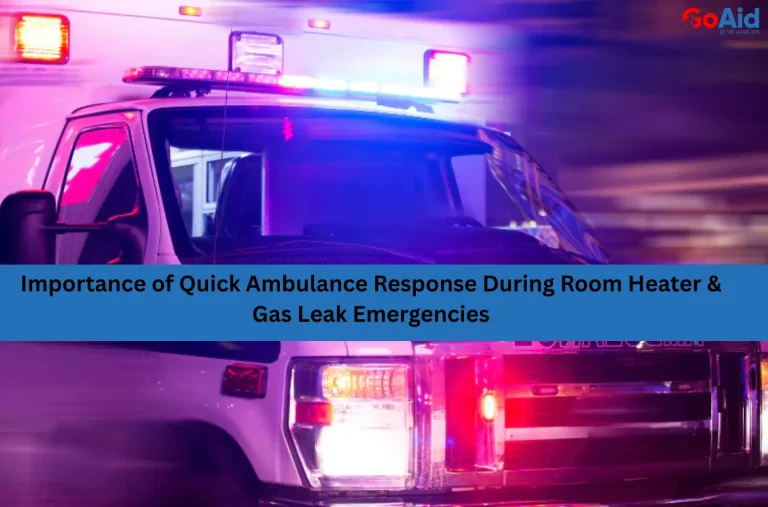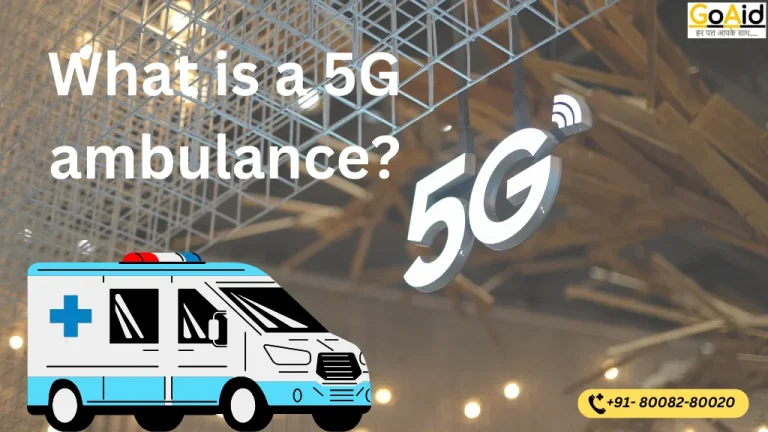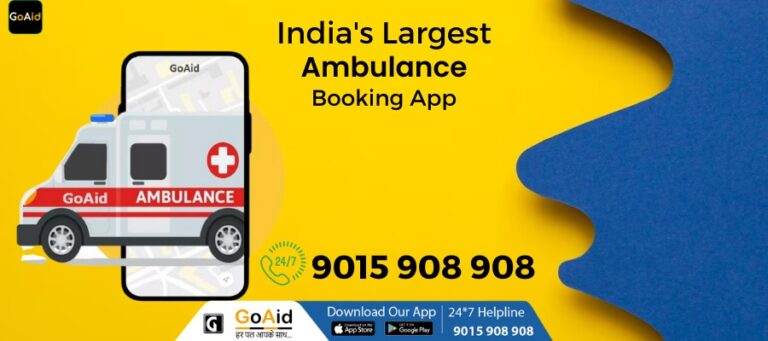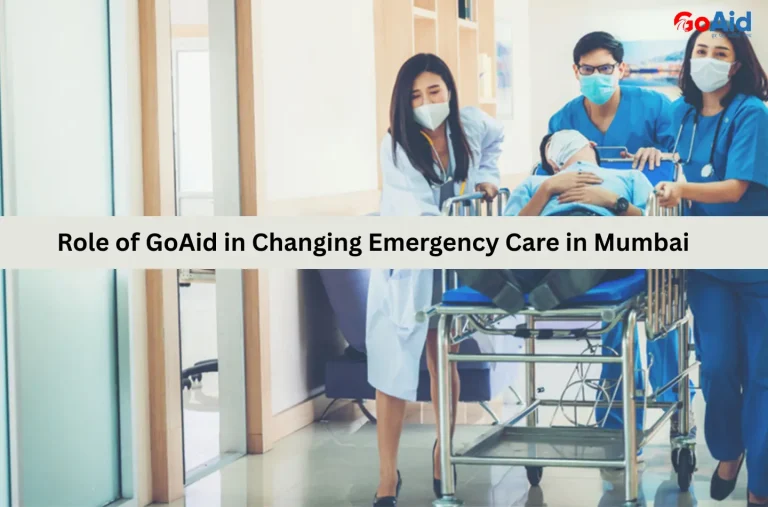In India, myths about ambulances continue to influence critical decisions during medical emergencies. From superstitions to the fear of ambulance costs, many people avoid calling for help when it’s most needed. This blog aims to debunk myths and reveal the truth about ambulance services to improve public perception of ambulances and promote ambulance awareness in India.
Why Indians Often Hesitate to Call an Ambulance
Despite growing access to emergency services, many Indians hesitate to dial for an ambulance due to deep-rooted ambulance misconceptions in India. Fear of ambulance costs, lack of trust in timely response, and cultural ambulance taboos make people believe it’s better to use personal transport, even in life-threatening situations. This delay often proves fatal.
Further, false beliefs about ambulances, such as associating them with death or bad luck, fuel emotional resistance. Some believe seeing an ambulance is inauspicious, while others consider it a last resort. Combined with stigma around emergency services, these barriers prevent rational decision-making. Education about EMS and consistent ambulance awareness campaigns are urgently needed to shift this public perception of ambulances.
Indian Myths About Ambulances Debunked
In India, misinformation and superstition often cloud people’s understanding of emergency services. LetŌĆÖs expose the myths about ambulances, counter ambulance misconceptions in India, and tackle the stigma around emergency services one fact at a time.
1. Myth: Ambulances are only for the dying.
Many avoid ambulances, thinking itŌĆÖs a vehicle for the dead. This false belief about ambulances delays timely help. In truth, ambulances are life-saving tools meant for immediate medical emergency response.
2. Myth: Calling an ambulance is too expensive.
The fear of ambulance costs prevents people from seeking urgent care. In reality, government and affordable ambulance services like GoAid now offer budget-friendly options and even free services in certain cases.
3. Myth: Ambulances never arrive on time.
A common public perception of ambulances is poor punctuality. But many cities now have improved dispatch systems, GPS-tracking, and trained paramedics to ensure better ambulance response times.
4. Myth: ItŌĆÖs faster to drive to the hospital yourself.
Due to ambulance hesitation reasons, many think driving themselves is quicker. However, ambulances can navigate traffic better using sirens and provide pre-hospital emergency care en route.
5. Myth: Seeing an ambulance is bad luck.
This old ambulance superstition still exists in rural and urban areas. Such cultural ambulance taboos increase fear and hinder emergency preparedness, even though the vehicle represents help and healing.
6. Myth: Ambulances donŌĆÖt have proper medical equipment.
Contrary to this ambulance misconception, most ambulances today, especially ALS and ICU variants, come with defibrillators, oxygen, ventilators, and other emergency medical support tools.
7. Myth: Calling an ambulance is too complicated.
Many believe the booking process is hard. With apps and services like GoAid, ambulance awareness in India is improving, allowing people to book ambulances online within seconds.
8. Myth: YouŌĆÖll be denied service without upfront payment.
This myth about ambulance services causes delays. In emergencies, life comes first. Many services now follow treatment-first, billing-later policies or even cashless options under insurance.
9. Myth: Ambulances are only for accidents.
This false belief about ambulances ignores their role in heart attacks, pregnancies, strokes, or fire injuries. Emergency Medical Services (EMS) are vital for various health crisesŌĆönot just road accidents.
10. Myth: Ambulance staff arenŌĆÖt trained.
People doubt the capability of EMTs and paramedics. The truth is, trained staff in services like GoAid handle critical care transport, stabilizing patients before hospital arrival.
The Truth About Ambulance Response Time and Equipment
One of the biggest ambulance misconceptions in India is that emergency vehicles are slow and unequipped. But modern services like GoAid are debunking these myths with faster dispatch systems, real-time GPS tracking, and 24/7 availability. These upgrades are reducing ambulance hesitation reasons by building public trust in emergency care.
Moreover, people often underestimate what ambulances carry. TodayŌĆÖs ambulances are not just vans, they’re mobile clinics. Equipped with oxygen cylinders, defibrillators, cardiac monitors, ventilators, and trained medical personnel, they provide essential pre-hospital treatment. Advanced Life Support (ALS) and ICU ambulances are even capable of stabilizing critically ill patients. It’s time to shift the public perception of ambulances and embrace the reality of modern, equipped, and responsive emergency medical services in India.
How to Know When You Must Call an Ambulance
Recognizing when to call an ambulance can save lives. Unfortunately, ambulance hesitation reasons and false beliefs about ambulances often delay help. Here are key situations where you should not hesitate to seek emergency medical services.
Severe Chest Pain: If someone experiences intense chest pain or pressure, call immediately. Ignoring this due to ambulance misconceptions in India can delay critical cardiac care and risk fatality.
Unconsciousness or Fainting: Loss of consciousness signals a medical emergency. Many avoid calling due to fear of ambulance costs, but professional help is crucial here.
Heavy Bleeding: Uncontrolled bleeding after an accident or injury needs fast EMS. Delays, due to myths about ambulances, can lead to shock or death.
Severe Burns or Injuries: Third-degree burns or major injuries require immediate medical attention. Breaking ambulance myths ensures quicker treatment and recovery.
Stroke Symptoms: Slurred speech, sudden weakness, or facial drooping are stroke indicators. Public perception of ambulances often prevents timely help; donŌĆÖt delay.
Seizures: First-time or prolonged seizures need urgent care. Cultural ambulance taboos should not override medical emergencies.
Severe Allergic Reactions: Anaphylaxis can be life-threatening. Ambulance awareness in India must grow to reduce ambulance hesitation.
Difficulty in Breathing: Breathing issues due to asthma, COVID, or unknown causes must be treated as serious. Education about EMS helps fight stigma around emergency services.
High Fever with Confusion: Especially in children or the elderly, high fever with altered mental status calls for EMS. DonŌĆÖt let false beliefs about ambulances stop you.
Suspected Fractures or Head Injuries: If someone shows signs of a broken bone or head trauma, an ambulance is safer than a car ride. The truth about ambulance services must be trusted.
Education and Awareness: The Key to Debunking EMS Myths
Spreading correct information and encouraging ambulance awareness in India are essential for changing the public perception of ambulances. These efforts help dismantle long-held ambulance superstitions and cultural ambulance taboos.
Community Health Workshops: Organizing workshops in schools and communities can counter ambulance misconceptions in India through real-life stories and expert guidance.
Social Media Campaigns: Targeted content on social platforms debunking EMS myths can reach a wide audience, especially the youth.
Medical Staff Engagement: Doctors and paramedics can educate patients and families, correcting myths about ambulances during consultations.
TV and Radio Awareness Ads: Broadcast media can tackle stigma around emergency services by dramatizing common ambulance hesitation reasons and facts.
Incorporating EMS in School Curriculum: Early education can eliminate false beliefs about ambulances and promote a culture of responsible emergency response.
Myth-Busting Flyers and Posters: Visual aids in hospitals, clinics, and public places can inform about ambulance costs, services, and when to call.
Celebrity Endorsements: Trusted public figures breaking ambulance myths can shift public opinion faster than institutions.
Government-Led Campaigns: A centralized ambulance awareness drive by authorities can reshape ambulance awareness in India at scale.
YouTube & Influencer Videos: Short, fact-based videos can quickly debunk myths and improve the public perception of ambulances among tech-savvy users.
Emergency Drills in Public Spaces: Mock drills in malls, schools, and offices familiarize people with EMS, replacing fear with knowledge.
GoAidŌĆÖs Mission to Break Myths About Ambulance Use in India
GoAid is actively transforming the public perception of emergency medical services by addressing ambulance misconceptions in India. Through awareness initiatives, the company is committed to educating people and breaking ambulance myths to encourage timely help-seeking behavior.
1. Public Awareness Campaigns
GoAid regularly conducts public awareness campaigns to challenge false beliefs about ambulances and reduce the stigma around emergency services through social media, community events, and outreach programs.
2. Affordable Service Transparency
To fight the fear of ambulance costs, GoAid displays pricing and offers cost-effective options, making ambulance services more accessible and reducing public ambulance hesitation.
3. Multilingual Education Drives
GoAidŌĆÖs multilingual educational efforts address ambulance superstitions and cultural ambulance taboos in regional languages, helping bridge gaps in ambulance awareness across India.
4. Collaboration with Hospitals
By partnering with hospitals, GoAid ensures the public learns the truth about ambulance services, creating a seamless and trusted emergency medical response system.
5. Myth-Busting Social Media Content
GoAid regularly posts content that debunks EMS myths and improves the public perception of ambulances using factual, visual, and easily shareable formats.
6. Community Engagement Initiatives
GoAid visits schools, colleges, and rural communities to conduct sessions on education about EMS, helping reshape long-standing cultural ambulance taboos.
7. Transparent Operations and Real-Time Tracking
GoAid uses real-time tracking to show how fast ambulances respond, eliminating myths about ambulance response delays and building public trust.
8. Trained Medical Professionals
Every GoAid ambulance has certified staff and proper equipment, challenging false beliefs about ambulances lacking essential medical care during emergencies.
9. 24/7 Helpline Support
Their helpline offers guidance and emotional support to people hesitant about calling an ambulance, aiming to break ambulance myths and boost confidence.
10. Promoting Timely Help-Seeking Behavior
GoAid stresses that calling an ambulance is not a last resort, encouraging people to seek help without delay and fight stigma around emergency services.
Conclusion to the Indian Myths About Ambulances Debunked
Many Indians still believe in outdated myths about ambulances, leading to dangerous delays during emergencies. Through education about EMS and active myth-busting, GoAid is shifting public perception and fighting the stigma around emergency services in India.
FAQs related to the Indian Myths About Ambulances Debunked:
Question-1: What are the most common Indian myths about ambulances?
Answer: Many people believe that ambulances are too expensive, slow to respond, or only for last-stage emergenciesŌĆöthese ambulance myths can delay critical care and potentially cost lives.
Question 2: Is it true that calling an ambulance is only for serious injuries?
Answer: No, this is a common misconception in EMS. You should call an ambulance even for symptoms like chest pain, stroke, or difficulty breathing to get timely medical help.
Question 3: Why do some people avoid calling an ambulance in India?
Answer: Cultural ambulance taboos, cost fears, and false beliefs about ambulance delays stop people from calling, even when itŌĆÖs urgently needed.
Question 4: Are ambulance services in India unreliable?
Answer: No. Services like GoAid provide reliable, fast, and well-equipped ambulances with trained staff, challenging the common misconception about ambulances.
Question 5: Do ambulances in India have proper equipment?
Answer: Yes. Modern ambulances, especially from providers like GoAid, are equipped with ventilators, oxygen, and monitors for emergency medical services.
Question-6: Is ambulance cost always very high in India?
Answer: Not true. Many ambulance providers offer affordable and transparent pricing, making emergency services accessible to more people.
Question 7: Can calling an ambulance save time in emergencies?
Answer: Absolutely. Ambulances offer trained medical support and faster hospital transport, especially in critical situations like heart attacks or trauma.
Question-8: Is there a superstition around ambulances in Indian culture?
Answer: Yes, some still see ambulances as symbols of bad luck or death, which fuels ambulance superstitions and delays timely help.
Question-9: How is GoAid breaking ambulance myths in India?
Answer: GoAid runs awareness drives, promotes EMS education, and uses real-time tracking to rebuild public trust in ambulance services.
Question-10: What should I do if someone refuses to call an ambulance?
Answer: Educate them about the risks, share facts to debunk ambulance myths, and insist on getting emergency medical help without delay.

